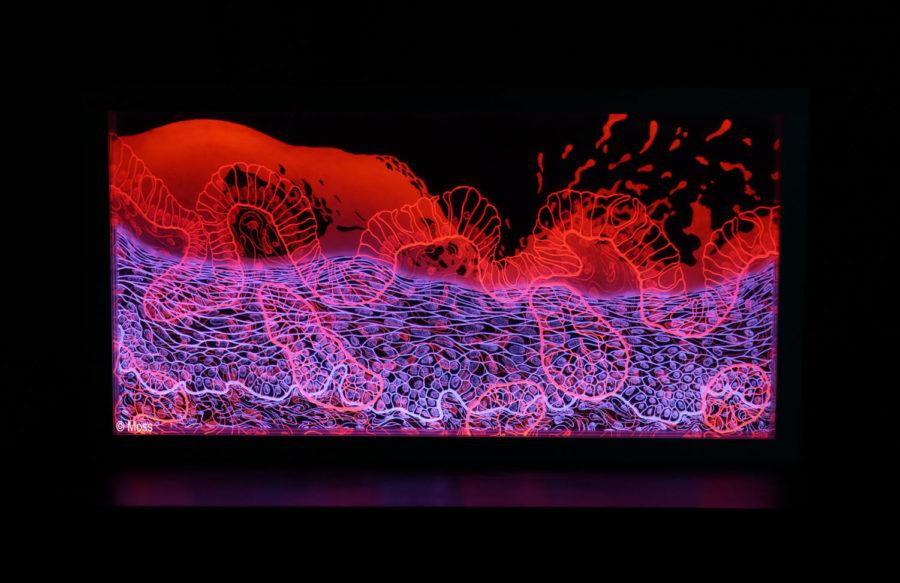Iowa State professor helping public better understand body through art
November 28, 2018
Kimberly Moss, Iowa State assistant professor of art and visual culture and coordinator of the biological and premedical illustration program, is using her research in hopes to boost health literacy.
According to the U.S. Department of Health and Human Services, “Health literacy is the degree to which individuals have the capacity to obtain, process, and understand basic health information and services needed to make appropriate health decisions.”
Moss said the idea came to her a few years ago after her father was diagnosed with esophageal cancer.
“It got me thinking about the information that patients get and the process of how we understand what is happening in our bodies when it comes to mechanisms of disease, healing and treatment options,” Moss said.
The project she calls “The Landscapes Within” is a research grant funded by the Center for Excellence in the Arts and Humanities (CEAH). It was completed this past June and had taken her about three years to create.
Each of the three pieces were constructed entirely by hand by using three tempered glass panels for each piece to allow for the viewer to feel as if they are looking out over a vast landscape. After hand-etching her drawings onto the pieces of glass Moss set them into a frame surrounded by LED lights.
“The impetus behind the glasswork is meant to be a little less direct in what its about and hopefully it would attract someones attention basically from a point of curiosity and interest and so they walk by and go ‘what is that?’” Moss said.
Each piece will be accompanied with a medical illustration explaining the link between the artwork and the different body parts and cells within it, as well as the story of what is going on during each of the body processes.
“They are all dealing with issues of healing and disease and lead to choices that we can make about our health and well-being that may improve what we are doing or make someone understand what is going on in their life,” Moss said.
Now in the research phase of the project, Moss is interested to see what people get out of the artwork. She said she hopes all the pieces will stay together and be displayed in a number of different settings such as museums, galleries and hospitals.
“I’m just eager to share them with the public in a lot of different ways to see well how does this work? Do people simply kinda go ‘hmm’ and leave? Or are they interested and engaged? And is this a good avenue to bring people into the next level of comprehension?” Moss said.
As she continues her research, Moss is still unsure whether or not she will be continuing the project but either way hopes that people can get something out of the the panels and begin to focus more on their health.
















